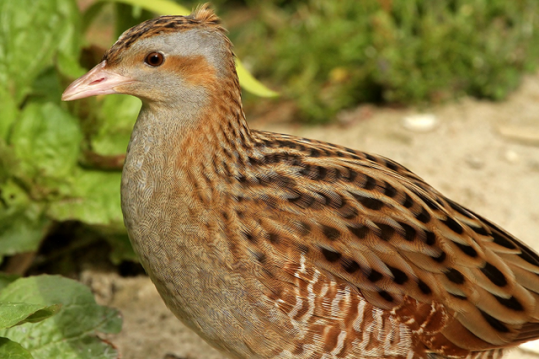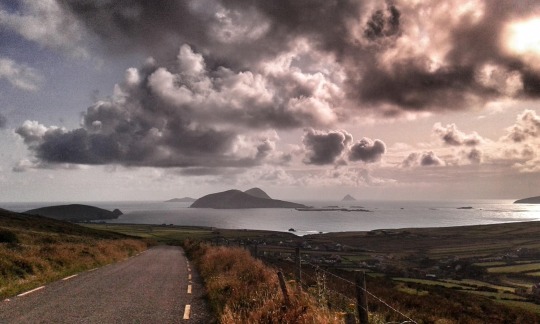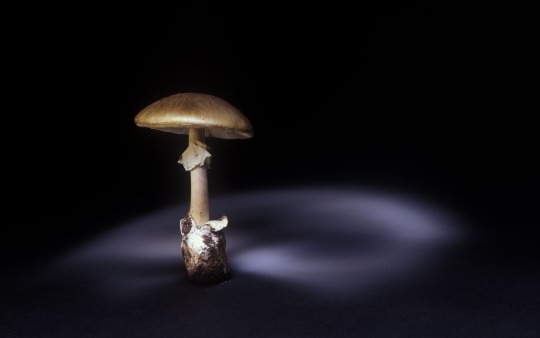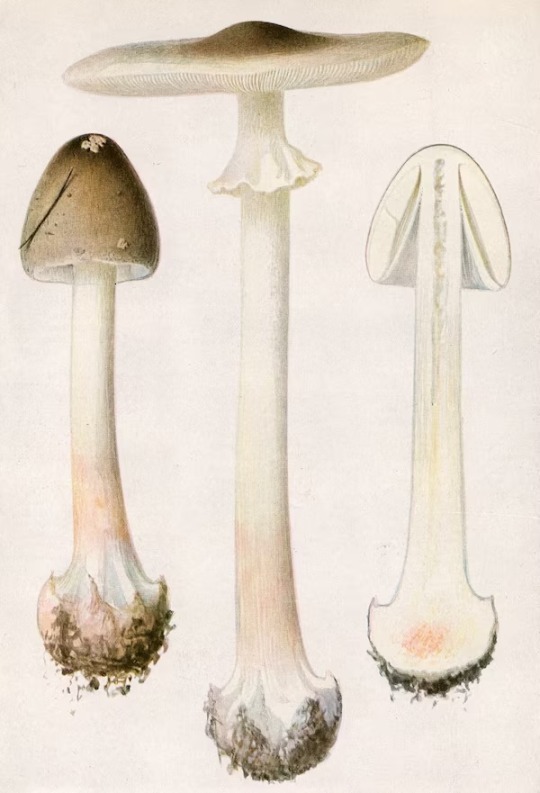#Ireland's West Coast
Text

Lighthouse at Dingle bay.
#nature#ocean#lighthouse#coastline#west coast#wild atlantic#west coast of Ireland#ocean lovers#oceanwiew#seascape#seaside#bay#clouds and sea#landscape photography#landscape#amoureux de la nature#offgrid#explore#travel#off grid#amanti della natura#atlantic ocean
25 notes
·
View notes
Text
the more i think abt it, the more sensible and responsible it is that i just post a list of irish phrases and explain the meanings, bc it's like. it's a lot about tone and word stress, yk? so let me demonstrate this:
FECK OFF: feck off can mean A LOT OF THINGS! it's important to first understand that the word "feck" isn't always interchangeable with the word "fuck", bc we can't say "feck" for sexual meanings. like it's more of a low-level expletive, but so low-level that some advertisements in ireland use it without rating. however, feck off is used more in a fondly exasperated way, or like a sort of "get outta here ya goof" thing. or like a disbelieving thing, or a fond eye roll way. also: "yeah, right!" "you're joking!" or "get out of my way, you're being a nuisance".
EEJIT: so an idiot is someone who lacks brain cells in a negative way, and an eejit is someone who lacks brain cells in a humorous way. you won't often hear someone angrily accuse another person of being an eejit. it's often used like "get up, ya big eejit!" like it's a funny and light-hearted thing. in america, there's a word pronounced similarly, idgit(?) and i need it to be known that these words are not the same. the connotations are different. i called my four year old cousin an eejit last week for tripping on his building blocks while trying to scare me during hide and seek. my boss called me an eejit yesterday because i misjudged the width of a chopping board and walked into it while trying and failing to take it to the kitchen. it's a fond and friendly word.
AH SURE LOOK: PRONOUNCED: ah-sher-look, it's usually almost one word. anyway this just gets used as a way of either changing the subject, offering an alternative perspective on an issue, or introducing your decision to leave a person's house.
YOU KNOW YOURSELF SURE: another phrase that looks innocuous. it has two meanings: either you can't really be bothered to explain something to someone but you have a vague understanding that they might get it with a little thought of their own, or you didn't hear what they were saying but you're too shy to ask them to repeat it again (or you just weren't listening) but you need to say something, and this is what you end up saying.
AH SURE: another way to say that you kinda want the conversation to end, or you're preparing to leave the vicinity, or you weren't really listening but you have a notion that they weren't speaking in a positive way so this might be what saves you.
#( OUT OF SOULS. )#( the irish dictionary will be reformed )#( also it's vital to understand that i'm in the republic and the west coast of ireland )#( there may be other speech patterns in other parts of the country. there absolutely IS to be honest )#( but this is what i know from my experience. )
7 notes
·
View notes
Text

Cottages on the Blasket Islands. off the west coast of the Dingle Peninsula in County Kerry, Ireland. Great Blasket Island, was abandoned in 1954 due to population decline & is best known for a number of Irish language writers who vividly described their way of life. Wiki. NMP.
Click on photo if blurred
📸 by Tracy Hogan @HoganSOG/via X
#Tracy Hogan#@HoganSOG#X#Blasket Islands#West Coast#Dingle Peninsula#County Kerry#Ireland#Nature#Travel#Photography
8 notes
·
View notes
Text

Harry Gruyaert, County Kerry, West Coast, Ireland, 1988
132 notes
·
View notes
Text
no appreciation for corncrakes on this webbed site. look how pretty he is!!!

#contact call#also they have a funny call. it's where their scientific name (crex crex) comes from#they are in the rail family! so related to coots and moorhens#and they breed in europe but go all the way down to south africa to winter. despite looking like a chicken#and they have declined so much in ireland :(#restricted to small areas mostly on the west and north coasts of the mainland and some islands
4 notes
·
View notes
Text
#OTD in 1961 – Hurricane Debbie hits Ireland.
As early as 13 September, residents were made aware that a storm might strike parts of Ireland with hurricane-force winds. Two days later, forecasters believed the storm would take a more southerly course towards France. This forecast was later withdrawn as the storm failed to turn eastward. Consequently, gale warnings were issued for much of western Ireland on the morning of 16 September, hours…

View On WordPress
#Extratropical cyclone#Hurricane Debbie#Ireland#Irish History#Most intense storms on record#Powerful tropical#West Coast of Ireland
6 notes
·
View notes
Video
youtube
🎻“Oh, in the cherry orchard” is a Ukrainian folk song from the west coast of Ireland 💖
🎻«Ой, у вишневому саду» – українська народна пісня із західного узбережжя Ірландії 💖
#youtube#🎻“Oh in the cherry orchard” is a Ukrainian folk song from the west coast of Ireland 💖 🎻«Ой у вишневому саду» – українська народна пісня
4 notes
·
View notes
Text
do i have any irish mutuals is there anywhere on ireland's west coast that i can see illuminated manuscripts
#going there with my mom for spring break!! and we are trying to decide what to do#we're flying into shannon bc it was cheaper and i think she knows the west coast better bc she lived there for a bit in like the 90s#and my school does have a study abroad in ireland which is in dublin so i figured i could try to get to that and then go there then#but anyway it seems that ALLLLL the illuminated manuscripts are in dublin PLEASE i just want to see sme......#by far one of my fav parts of art history#it's a 2.5 hour drive from galway to dublin and personally i do not think my mom would be willing to drive 5 hours round trip for it#and im not allowed to drive a rental car :/ SAD ! i really wanted to bc i wanted to try driving on that side of the road#talkin
1 note
·
View note
Text
First full chapter, Homecoming, of the Irish Twilight rewrite Duskus, available now on AO3. Read the chapter below, and listen to the soundtrack above on SoundCloud or Spotify.
#Twilight#vampires#spooky#fanfic#Ireland#Irish Twilight#West Cork#Edward Cullen#Bella Swan#coast#sea#rainy day#SoundCloud#Spotify
0 notes
Text

This is Ireland ☘️💞🌊
1 note
·
View note
Text
‘Massive’ cocaine seizure off west coast of Ireland as cops and customs search cargo ship | HSF5773 | 2023-12-28 08:08:01 | December 28, 2023 at 09:08AM
‘Massive’ cocaine seizure off west coast of Ireland as cops and customs search cargo ship | HSF5773 | 2023-12-28 08:08:01
Read More …
Check full articles at Source: ALPHA MAG

View On WordPress
#‘Massive’ cocaine seizure off west coast of Ireland as cops and customs search cargo ship | HSF5773 | 2023-12-28 08:08:01#Politics#ShowBiz#Sport#Tech#UK#US#World
0 notes
Text

Road to the heaven.
#nature#oceanwiew#ocean lovers#wild atlantic#atlantic ocean#ireland#irlande#irlanda#Irish#kerry#west coast#coastline#islands#Blasket islands#seascape#landscape photography#beautiful photos#photoblog#photography#amanti della natura#travel#offgrid
20 notes
·
View notes
Text

West Coast, Ireland
0 notes
Text
Environment: Death Cap Mushrooms are Extremely Deadly—and They’re Spreading
The Invasive Death Cap Mushroom is thriving in North America. While it can be difficult to distinguish from an edible one, make no mistake: It can do a number on you.
— By Emily Martin | August 31, 2023

The Death Cap is the World's Deadliest Fungus, responsible for 90 percent of the World's Mushroom-related Poisonings every year. Native to Europe, Death Caps have spread around the World over the past Century. Photograph By Yves Lanceau/Nature Picture Library
The name itself is both alarming and self-explanatory: the death cap mushroom.
Scientifically known as Amanita phalloides, death caps are responsible for 90 percent of the mushroom-related fatalities that occur every year, making them the world’s most lethal mushroom. The infamous fungus was recently in the news after three people in Australia died after ingesting what investigators suspect were death caps.
The mushroom originates from the U.K. and parts of Ireland, but over the past century, it has hijacked trips around the world, spreading to Australia and North America.
Since arriving on the West Coast, the invasive mushroom has spread rapidly throughout California and has even appeared as far north as British Columbia, but much about its arrival remains a mystery. Why the mushroom spread so quickly, when exactly it arrived, and how it will impact the environment it grows in are the topics of ongoing research.
Here’s what you need to know about this deadly mushroom—and how to spot one—in case it emerges in a forest near you.
How The Mushroom Earned Its Name
The unassuming mushroom can grow up to six inches tall with a similarly sized domed cap, sometimes tinged yellow or green. Under its cap are white gills and an off-white stem—characteristics that make it difficult to distinguish from an edible mushroom.
Yet unlike an edible mushroom, it can cause extreme damage to the liver and kidneys, or in some cases, death.
That’s because the mushrooms contain a unique set of toxins, says U.S. Department of Agriculture plant pathologist Milton Drott. Though it is safe to the touch, a death cap contains amatoxins, which prevent cells from creating proteins, ultimately causing cell death and organ failure.
Drott notes that these toxins may have allowed the populations spreading through the U.S. to thrive, serving up a defense against any new predators the fungus encounters in its environment.
But studying the death cap mushroom can be difficult. It’s challenging to replicate ideal environmental conditions for a mushroom in a lab, and studying plucked mushrooms requires complex DNA sequencing.
Some fungi can damage the environment, like the fungus that wiped out American Chestnut trees, but so far, there’s no strong evidence that death caps are a threat to their new environments. In fact, trees and other plants benefit from their presence.
Death caps are a mycorrhizal fungi, which means they form a relationship with plants that’s mutually beneficial for both plant and fungus. The plant receives nutrients from the soil that the fungus extracts, while the fungus receives sugars from the plant.
A Mysterious Move Around The World
It’s nearly impossible to pinpoint the actual moment the deadly mushroom made its way to the western U.S. and why exactly it’s continued to spread since then, says Anne Pringle, a mycologist at the University of Wisconsin-Madison and a leading expert on death caps.
The earliest record of the mushroom in California is from the 1930s. Some researchers theorize that death caps immigrated in the soil of a cork tree transported from Europe to California to make corks for a then burgeoning wine industry. Others say the mushroom may have hitched a ride on a mystery plant imported to beautify college campuses.
Regardless, both Pringle and Drott say the only thing they’re certain of is that the fungus was likely dormant—and thus hidden from human eyes—in an imported plant’s soil.

Scientifically known as Amanita Phalliodes—Death Caps were first spotted in California in the 1930s. Some scientists think they were imported in the soil of cork trees, used to make corks for California's wine makers.
“When they planted that tree in the ground, they also effectively planted the fungus. So, what exactly is the smoking gun, who did it, and when—that's the thing I think we'll never truly know,” Pringle says.
Pringle can’t say for sure what makes the state such a friendly habitat for the invasive species, but she does note that the fungus can tolerate different environments throughout Europe, growing as far north as Sweden and as far south as southern France.
Since arriving, Pringle says its geographic extent has grown larger and spread to other States; most recently it appeared in Idaho.
Retracing Their Steps
When scientists first spotted death caps in the U.S., they thought they may be native to the region because of how widespread they are.
In 2009, Pringle was the first to label the population in California as invasive, a discovery she made by inspecting the mushrooms’ DNA.
“When they planted that tree in the ground, they also effectively planted the fungus. So what exactly is the smoking gun, who did it and when, that's the thing I think we'll never truly know.”
— Anne Pringle
And when scientists did realize the death cap had newly spread into the U.S., there wasn’t any preexisting data to provide clues about where exactly it entered North America and how quickly it multiplied.
“There's so many ideas to test, it’s hard to even know where to get started,” Pringle says.
Research on invasive fungi in the environment is quite new, Pringle says, so answers to questions of why death caps are spreading and its impact on local ecosystems may still be years away.
Drott thinks the mushroom may be proliferating because it thrives in its new soil and with its adoptive plants, or there may be a lack of predators in these new habitats to keep death cap populations in check.
His research has revealed at least one clue: the genes responsible for producing toxins in American death caps are extremely unique, distinct from their genetic cousins in Europe, and may be the key to understanding how the invasive plant has thrived in North America.
Earlier this year, scientists published preliminary research suggesting the death cap can reproduce both with and without a mate, and that a single fungus can live a long, reproductive life.
Encountering A Death Cap
Spotting a death cap requires vigilance.
“It’s scary that these [pass for] delicious mushrooms,” Drott says.
He adds that, in addition to an unalarming physical appearance, the death caps’ toxins don’t smell or provide any other obvious giveaways. Its toxins are also extremely stable when heated and don’t break down when cooked, unlike other edible fungi that are only dangerous to eat raw.
That’s why scientists suggest erring on the side of caution and steering clear of foraging mushrooms. Pringle also emphasizes the importance of learning the plants in your local environment.
“If you can tell the difference between Swiss chard and spinach, you can learn difference between edible and poisonous mushrooms,” Pringle says, emphasizing the small but recognizable differences between the two greens. “People want a magic rule, but there’s nothing I can hand you in a sentence or paragraph."
Rather, she says identifying physical differences between death caps and a safe mushroom can become easier with exposure.
Spreading Awareness
Many death caps have been found in National Parks, including Point Reyes National Seashore in California, where Pringle assisted with a study on the invasion in 2010.
National Park Service (NPS) science advisor Ben Becker notes that parks are constantly seeing new invasive species with the frequent movement of people and equipment, and the death cap is a good example of how humans can transport tiny fungal invaders around the world.
Becker says NPS works with local mushroom science groups like the Bay Area Mycological Society to spread public awareness about the dangers of foraging mushrooms.
If you’re concerned about something you have eaten, go to the emergency room and if possible, take pieces of the mushroom you ate for identification.
And as many foragers and scientists say, don’t munch on a hunch.
#Environment#Mashroom | Amanita Phalliodes—Death Caps#Spotted | California | 1930s#Imported | Soil | Cork Trees 🌲#Extremely Deadly#Invasive#North America 🇺🇸#Difficult | Distinguish#Emily Martin | National Geographic#Native | Europe 🇪🇺#Deaths | Australia 🇦🇺#UK 🇬🇧 | Ireland 🇮🇪#West Coast | California | US 🇺🇸#British Columbia#U.S. Department of Agriculture | Plant 🌱 Pathologist | Milton Drott#Toxins#Thrive#Complex DNA Sequencing#Fungus | Wiped Out | American Chestnut 🌰 Trees 🌲#Anne Pringle | Mycologist | University of Wisconsin-Madison#Sweden 🇸🇪 | France 🇫🇷#Idaho#Vigilance#Swiss Chard | Spinach#Dangerous | Eat Raw#National Parks | Point Reyes National Seashore in California#National Park Service (NPS)#Science Advisor | Ben Becker#Bay Area Mycological Society
0 notes
Text


Thinking about my fox experiences 3 years apart across the sea
1 note
·
View note
Text
Every time I look at a specific set of Irish maps that show the decline of Irish speakers between 1800 and 2000 I want to SCREAM
In 1800, almost three quarters of our island is depicted as Irish speakers, with the British dominated Pale region (Dublin and surrounding areas) not speaking Irish.
In 1850, shortly after the famine, the graphic recedes right back to just the west coast of Ireland, showing the population of Irish speakers.
And the reason is the Famine. An Górta Mór, the Great Hunger, our genocide. So many people died, and even more emigrated and they never taught Irish to their descendants because we were so hated that to acknowledge yourself as Irish, as an Irish-speaker meant you would have far less opportunities in life, so we lost our language.
And almost two hundred YEARS after the Famine, we've regained our population but not our language.
I love Irish so incredibly much, it is the language of my heart and soul, mo teanga féin álainn, and I will never, not in a thousand lifetimes, forgive those who enforced a Famine on my country, who exported corn and grain to other lands when my people were starving.
Ireland had food, it had crops, the Irish people laboured in our fields to grow crops and the British put it all on ships to feed the rest of their Empire and not us.
I will never, ever, stop being angry about the Famine and until the day I die, I will speak Irish for all of mo shinsirigh, mo chlann a fuair bás gan a dteanga dúchasach, and I will speak it for myself because is linn na Gaeil, agus is í Gaeilge ár dteanga aoibhinn álainn féin.
395 notes
·
View notes